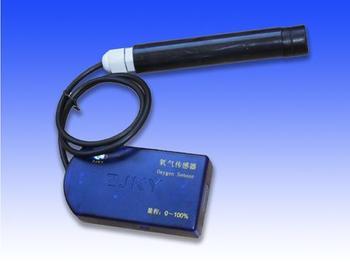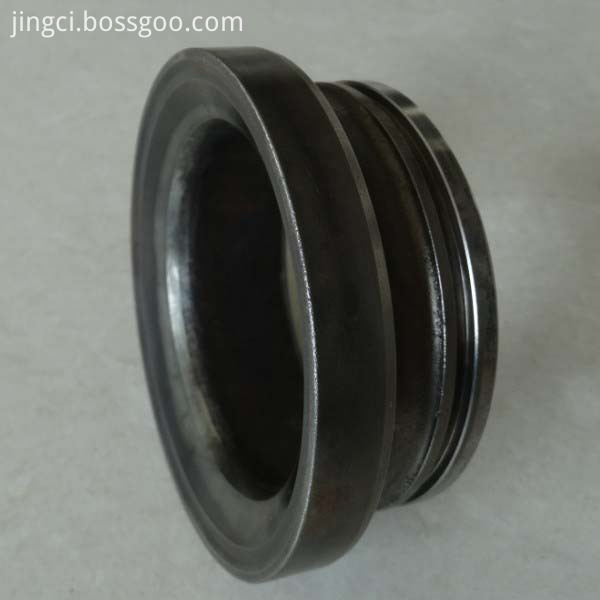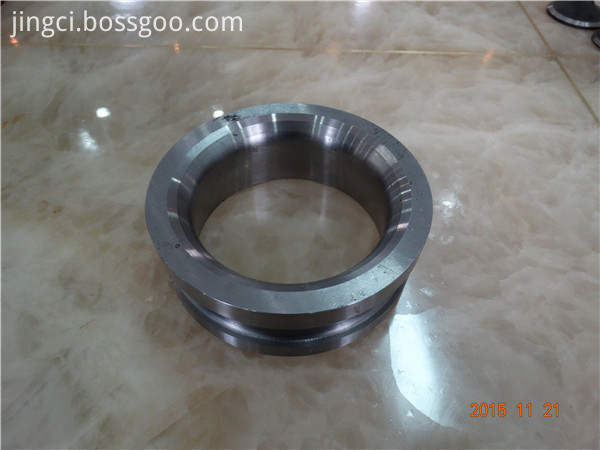 Energy-saving and emission-reduction are getting more and more attention in the increasingly serious environmental problems. While fossil energy is being consumed in large quantities, it has also brought about no small impact on the environment. In the “Twelfth Five-Year Plan for Energy Saving and Emission Reduction†issued by the State Council, the state has made detailed and quantified measures and targets for energy conservation and emission reduction in key industries and key areas. Under this premise, the market for emission monitoring instruments and meters related to smoke emission and combustion efficiency monitoring will usher in explosive growth. In order to meet the business needs and development trend of the Chinese market, British City Technology Corporation released a long-term lead-free oxygen sensor designed for flue gas analysis at the end of 2012, 4OXeco LP.
Energy-saving and emission-reduction are getting more and more attention in the increasingly serious environmental problems. While fossil energy is being consumed in large quantities, it has also brought about no small impact on the environment. In the “Twelfth Five-Year Plan for Energy Saving and Emission Reduction†issued by the State Council, the state has made detailed and quantified measures and targets for energy conservation and emission reduction in key industries and key areas. Under this premise, the market for emission monitoring instruments and meters related to smoke emission and combustion efficiency monitoring will usher in explosive growth. In order to meet the business needs and development trend of the Chinese market, British City Technology Corporation released a long-term lead-free oxygen sensor designed for flue gas analysis at the end of 2012, 4OXeco LP. Conventional lead-containing oxygen sensor The oxygen sensor traditionally used for exhaust gas detection can be considered as a two-electrode metal-air battery consisting of an air cathode, a lead anode, and an alkaline electrolyte. The cathode is a piece of polytetrafluoroethylene (PTFE) film coated with an active catalyst. The anode is a lead block that is wrapped in a sealed metal or plastic container. Air enters the sensor through the top capillary and the cathode connects to the sensor's two pins through the current collector wire.
(1) Combustion products affect the service life. Combustion products generally contain acidic gases such as carbon dioxide (CO2), nitrogen oxides (NOx), and sulfur dioxide (SO2). The inside of the sensor is alkali solution. After a long time of use, the PH value of the alkali solution will decrease, and the lead consumption of fuel will also be accelerated, thereby shortening the life of the sensor.
(2) Does not meet lead-free requirements. Although lead-containing sensors are now immune from RoHS and WEEE, lead-free sensors will gradually replace lead-containing sensors and have become an irreversible environmental trend.
(3) Large weight and large volume. To increase the life of the sensor, it is necessary to increase the weight of lead.
Long-acting lead-free oxygen sensor technology features For the shortcomings of lead-containing oxygen sensors, the second-generation three-electrode long-life lead-free oxygen sensor 4OXeco LP came into being. "eco" means "economy," and "LP" means "low power."
(1) Long life. Throughout the reaction, a highly active electrode only acts as a catalytic oxidation or reduction, without any consumption, thus avoiding the problem of conventional lead anode electrodes of the fuel depleted oxygen sensor. 4OXeco LP's unique structural design provides excellent control of the volatilization of the electrolyte inside the sensor, so its lifetime also exceeds that of conventional oxygen sensors. With a temperature range of 0°C to 60°C and a relative humidity range of 40% to 75%, the life of this sensor can exceed 5 years.
(2) Acid-resistant gas. 4OXeco LP uses an acid electrolyte, which can effectively avoid the interference of acid gases generated by the combustion of natural gas, petroleum, wood, biomass and other types of fuel, and ensure the applicability of the sensor in various fuel use environments.
(3) Light weight. Lead-containing oxygen sensors used in the emission field, such as 5FO, weigh 44g; while 4OXeco LP only has 5g, which has a significant weight advantage. It provides the necessary conditions for the development of a small, lightweight combustion efficiency table.
(4) There is certification. 4OXeco LP has been used in Germany, a well-known brand in handheld instruments, and received TüV certification, implementation of the standards EN50379-2, but also in the failure rate of less than 1% of the warranty period.
(5) RoHS and WEEE compliance. 4OXeco LP does not contain lead, which makes it possible for the instrument to pass RoHS and WEEE certification.
(6) Complete technical documentation. We can provide users with sensor characteristic documents, operating principles and reference circuits to protect our customers' applications.
Long-acting lead-free oxygen sensor The application circuit of the three-electrode oxygen sensor is basically the same as that of an ordinary electrochemical sensor with bias. The biggest difference is the difference in bias voltage. Referring to Figure 4, the specific analysis of the circuit is as follows:
(1) The SEN voltage is 600mV lower than REF and the accuracy requirement is ±10mV.
(2) The bias voltage needs to be divided by the reference voltage chip and matched with a suitable filter capacitor.
(3) Op amps use precision rail-to-rail input and output op amps as much as possible. The quiescent current is preferably less than 10uA, mainly to extend battery operating time.
(4) The sensor current flows outward from SEN and Vout decreases with increasing oxygen concentration.
(5) When the meter is not in use, D1, IC1, and IC2 should not be powered down as much as possible because the 4OXeco LP signal needs to be fully balanced for more than 45 minutes.
(6) If users think that the positive and negative power supply is troublesome, you can contact our representative office. We can provide you with a single power supply circuit.
(7) The preamplifier circuit should be as close to the sensor as possible, which can minimize electromagnetic interference and improve the signal-to-noise ratio.
(8) If you want to design an intrinsically safe circuit, the surface area and thermal resistance of each electronic component need to be calculated in detail.
The application history of 4OXeco LP in the market can be traced back to 2010. Citytech customized this product for a well-known German company, successfully applied it to the flue gas analyzer, and obtained TÃœV certification. The sensor has been praised by end-users for its characteristics of miniaturization, resistance to acid gas interference, and long life. At present, major domestic and international smoke analyzer producers have tried 4OXeco LP successively. The test data is very satisfactory and is expected to be put into use in large quantities in the second half of this year.
According to the characteristics of 4OXeco LP, the specific application is as follows:
(1) On-line smoke analysis table. At present, the domestic use of zirconia or partial pressure type lead oxygen sensors on-line monitoring of oxygen, the latter's theoretical life of nearly 5 years, but by the inlet temperature and humidity changes, life can often only reach a year or so, and its resistance to high concentrations Acid gas interference is weak and limits the user's application range. 4OXeco LP is not affected by the temperature and humidity of the intake air, it can work stably for 5 years under the condition of high concentration acid gas interference, and at the same time, it can save users a lot of maintenance costs due to sensor failure during the warranty period (product replacement and Travel). We expect the annual capacity of this product in the Chinese market to be 4-5 thousand, and maintain an annual growth rate of 15%-20%.
(2) combustion efficiency analysis table. Currently, the combustion efficiency analysis table is mostly used for the analysis of the combustion efficiency of industrial boilers, but with the gradual adoption of domestic boilers, especially the successful application of condensing boilers, the household heating market will have an explosive growth, and the combustion efficiency analysis table will gradually With the expansion, the monitoring mechanism is more complete, and boiler plant and maintenance units are required to have analysis tables. We expect that the annual capacity of this product in the Chinese market will be 4-5 thousand, and maintain an annual growth rate of 20%-25%.
(3) Flue gas analyzer. Domestic smoke analyzers are mostly box-type, with internal lead-oxygen sensors and large-size 3 series poison gas sensors. We can provide 4OXeco LP and 5 series poison gas sensors to replace them, so that instrument manufacturers can make products lighter and thinner. , short and small direction.
Concluding remarks During the "12th Five-Year Plan" period, China's energy-saving emission reduction situation is grim, but at the same time it also provides a huge business opportunity for related instruments. British City Technology Corporation will unswervingly promote technological innovation and abide by Six Sigma manufacturing philosophy. The launch of 4OXeco LP is a perfect interpretation of our technological innovation and manufacturing concept. We will continue to provide our customers with products that meet stringent quality standards and the most accurate and reliable gas detection solutions in order to perfectly meet the specific needs of various customers under the major goal of energy saving and emission reduction.
The material properties to be considered when selecting a soft seat are
1) fluid compatibility, including expansion, hardness loss, permeability, degradation;
2) hardness;
3) permanent deformation;
4) degree of recovery after load elimination;
5) pull-up Compressive strength;
6) deformation before rupture;
7) modulus of elasticity.


Train Valve Seat,Train Engine Valve Seat,Train Engine Valve Guide Seat,Train Parts Valve Seat
Hebei Zhonghai Shipping Accessories Manufacturing Co., Ltd. , http://www.zhonghaiship.com